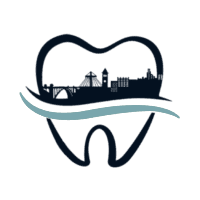Early orthodontic treatment provides children with the best opportunity for good oral health by treating signs of misalignment early. It can be concerning at first to wonder whether not a child needs orthodontic treatment, but many orthodontists will argue for this treatment because it benefits their patients’ lives for years to come. Here’s everything you should know about early orthodontic treatment.
How Does Early Orthodontic Treatment Work?
Early orthodontic treatment is a specific type of treatment for children who still have their baby teeth. Also known as phase one orthodontic treatment, it treats baby teeth alignment before transitioning to adult teeth to prevent improper growth and alignment.
So, why do some orthodontists recommend early orthodontic treatment? Early orthodontic treatment aims to prevent skeletal issues with the teeth and jawline before the permanent teeth emerge. It can address issues such as bite complications, protruding teeth, narrow jawline, and malocclusion as a preventative measure. It’s an excellent way to ensure that children growing up won’t experience further complications, including tooth decay, gum disease, and tooth loss.
Here are some treatments options that your orthodontist may use for early orthodontic treatment:
- Palatal Expanders: Palatal expanders work to expand the palate, or the roof of the mouth, in cases where there isn’t enough space in the mouth for the teeth to erupt properly.
- Partial Braces: Some types of partial braces can be used to align sections of your child’s teeth and can be either fixed or removable.
- Self-Litigating Braces: Self-litigating braces work to hold the archwire in place without the need for rubber bands and are considered an excellent choice for children who require metal braces.
- Brace Retainers: Retainers may be worn after their initial stage of treatment to help maintain their results after achieving proper alignment.
Early orthodontic treatment is performed for children around seven years of age, and after their treatment, they will transition to phase two orthodontic treatment around age 13. Performing the early orthodontic treatment helps prevent the need for extractions in the future and helps give them a healthy, aligned smile that will last for life. If you’re wondering if your child needs early orthodontic treatment, some signs they do need it to include:
- Early or late loss of baby teeth
- Difficulty biting and chewing
- Mouth breathing (not through the nose)
- Thumb sucking after age five
- Speech impediments caused by misalignments, such as lisps.
- Protruding teeth
- Gapping teeth with wide spaces
- Jaw shifting when in a rested position
- Crowded front teeth
If you’ve started noticing orthodontic problems early, make sure to speak with an orthodontist in your area to learn more about your options for treatment.
Contact Your Orthodontist Today For Early Orthodontic Treatment
It’s important to note that not every child with misaligned baby teeth will need early orthodontic treatment. Children who don’t have noticeable concerns can progress to phase two treatment. In these cases, the best way to determine if your child needs early orthodontic treatment is to speak with your orthodontist for a consultation.



